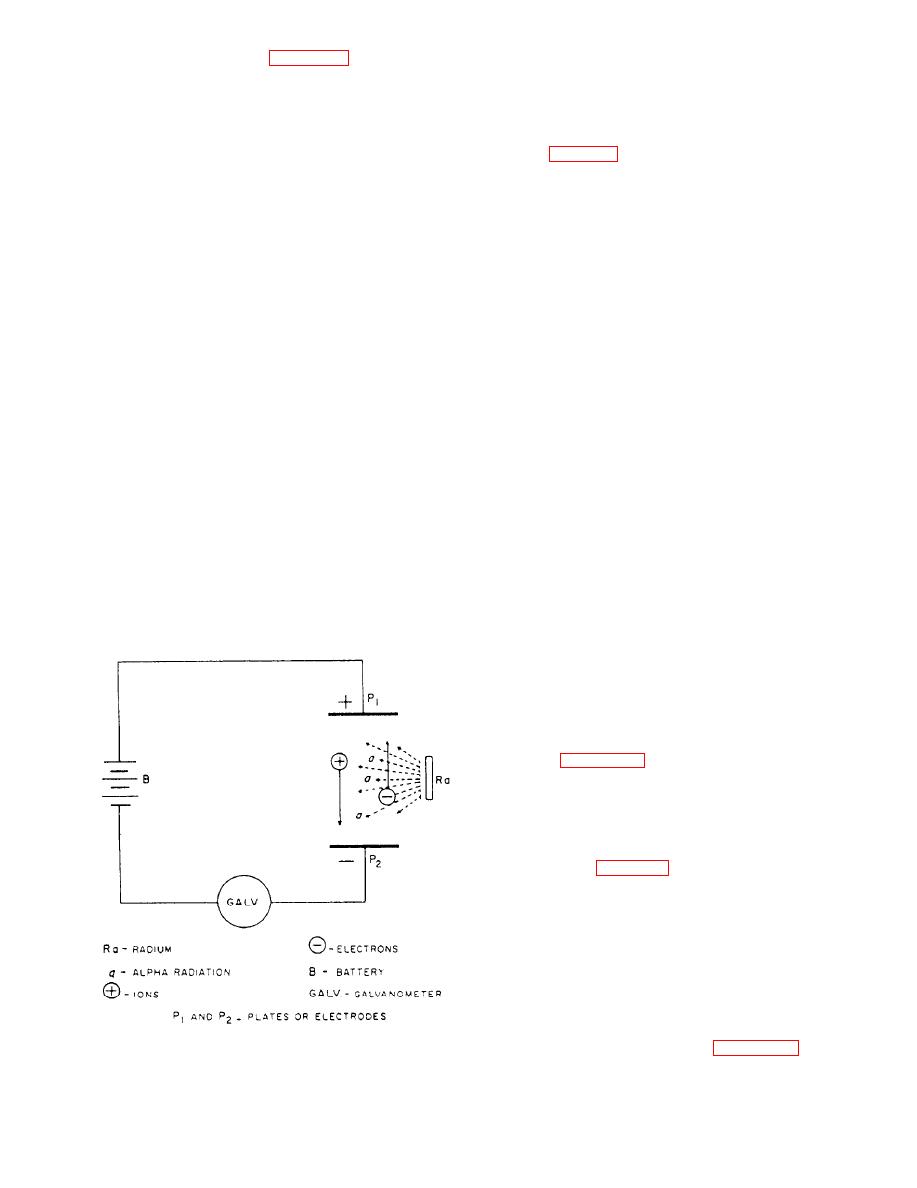 |
|||
|
Page Title:
Figure 9-5.--Ionization principle. |
|
||
| ||||||||||
|
|
 field, a current will flow. Figure 9-5 illustrates this
RELAYS
principle. A potential from battery B is applied to plates
Relays are used in alarm, safety, and warning
P1 and P2. The air between the plates is ionized by the
systems to open and close circuits that may operate
radium. The charged particles move in the direction
audible and/or visual signals. Relays were discussed
indicated by the arrows. A sensitive galvanometers mea-
earlier in chapter 3 of this training manual.
sures the current, the value of which depends on the
strength of the radium source, and part of the ions and
electrons collide and neutralize each other. It is only
AUDIBLE AND VISUAL SIGNALS
when the potential reaches a certain limit that all of the
ions formed reach the plates. This is known as the
Audible and visual signals are used with the alarm,
saturation point. Beyond this point, the current remains
safety, and warning systems to alert personnel that an
virtually constant regardless of the increase of potential.
alarm condition exists. The types of signals and their
Only a change in the gas in the chamber will cause a
locations depend on the circuit they are used with.
change in the current flow when the unit is operating at
Audible and visual signals are also used with alarm
the saturation point.
panels and alarm switchboards, and as extension
The presence of combustion gas or smoke
signals in remote spaces.
particles between the plates will cause a sharp
decrease in current flow through the galvanometers.
AUDIBLE SIGNALS
This is true because the combustion gas and smoke
particles are many times larger and heavier than the
There are many types of audible signals in use on
air molecules and require a stronger radioactive source
board Navy ships. The type of signal used depends
to become ionized. Also, the ionized combustion gas
upon the noise level of the location and the kind of
and smoke particles are all neutralized by free
sound desired. The principle types of audible signals
electrons before reaching one of the plates.
are bells, buzzers, horns, sirens, and electronic signal
units.
Dual-Purpose Detectors
Dual-purpose detectors combine an ionization
Bells
detector and a mercury thermostat in the same circuit
in parallel.
Bells used with alarm, safety, and warning
systems are either ac or dc operated. Bells that are ac
operated have four types of gongs: circular 3-inch
diameter (type IC/B8S4), circular 4-inch diameter
(types IC/B5DF4 and IC/B5S5), circular 8-inch
diameter (types IC/B1S4 watertight and IC/B2S4
watertight explosion-proof), and cowbell (type
IC/B3S4). Figure 9-6 is an illustration of a type
IC/B3S4 bell.
Bells that are dc operated have three types of
gongs: circular 2 1/2-inch diameter (type IC/B1D4),
circular 8-inch diameter (type IC/B2D4), and cowbell
(type IC/E13D4). Figure 9-7 is an illustration of a type
IC/B2D4 bell.
Buzzers
Buzzers are used only in relatively quiet spaces,
There are two types of buzzers used with alarm, safety,
and warning systems, Type IC/Z1D4 is dc operated
and has make and break contacts. Type IC/Z1S4 is ac
operated and has no contacts. Figure 9-8 is an
illustration of a type IC/Z1D4 buzzer.
|
|
Privacy Statement - Press Release - Copyright Information. - Contact Us |